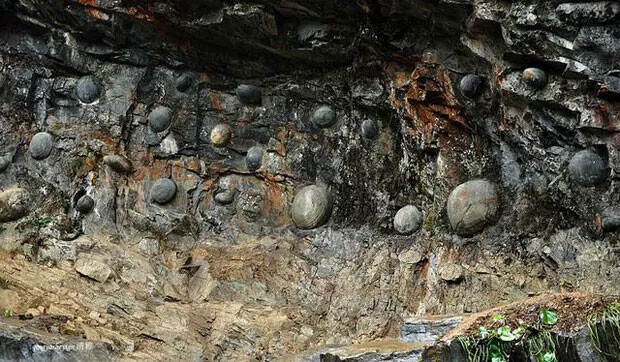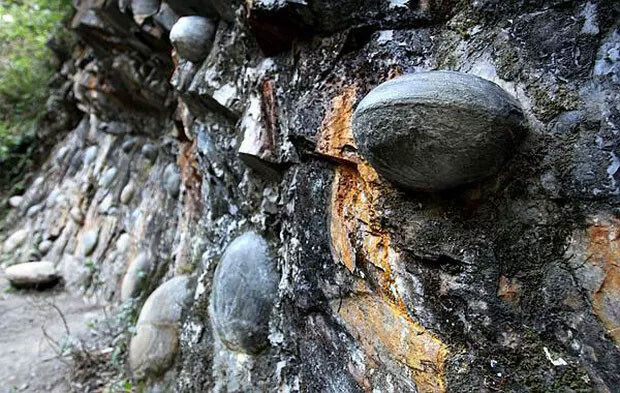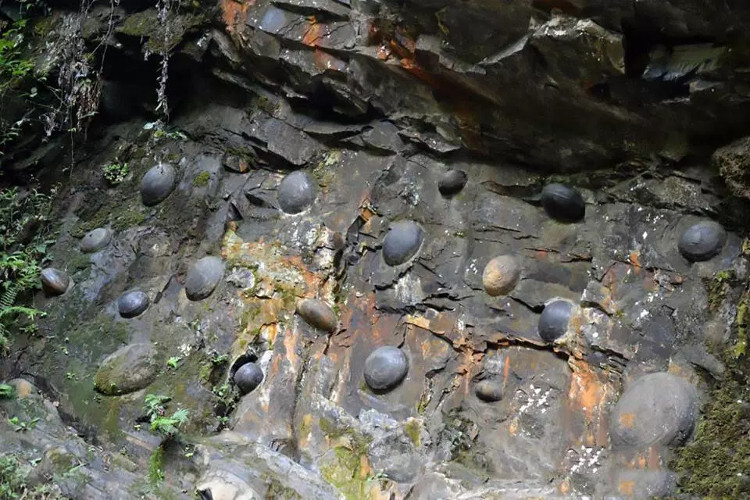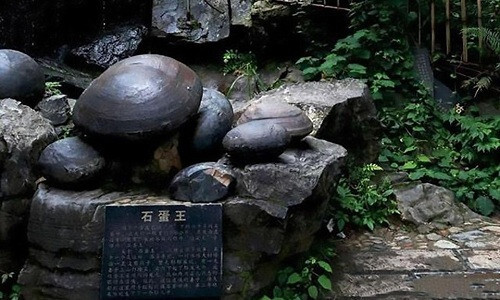A small cliff in China “lays” egg-shaped stones every 30 years, surprising scientists.
Locals in the Jiannan Autonomous Prefecture in southwestern China’s Guizhou Province were amazed to see smooth and rounded stone eggs that protrude from the cliffs and then fall to the ground. The cliff is named Chan Da Ya (San Dan Nhai), which means “egg-laying cliff” in Chinese.


This cliff has puzzled geologists for decades. Although there have been many theories and scientific explanations, no one has given the most accurate and convincing answer.
This 2.4m high and 19m long cliff is like most other cliffs. The strange thing is that emerging in the middle of the rough cliff face are smooth circular convex surfaces of different sizes. Over time, these “egg stones” are getting bigger and bigger, gradually exposed and when they can’t stick to the wall anymore, they fall down to make room for new “eggs”.
According to the villagers of the nearby village of Gulu, the cliffs of Chan Da Ya take 30 years to “lay strange stone eggs”.
Exactly every 30 years, Chan Da Ya “lays” a lot of “eggs” to the surprise of the people living around and the scientific world.

The test results show that the rocks taken from Chan Dan Ya formed 500 million years ago during the Cambrian period. However, this particular cliff of Mount Gandeng is made up of limestone common in many regions of the Earth. In the stone eggs contain a large amount of sediment.
The Cambrian period more than half a billion years ago was the period of Earth’s great biological boom, turning the whole world into a “beast planet” with rich and strange creatures. Most of them are extinct but laid the foundation for all future species.
At that time, this area was the ocean. The abundant silicon dioxide particles clung to each other, forming spheres in the water before being compressed into metamorphic rock. Being in water itself causes the silicon dioxide blocks to become rounder and smoother.
Over geologic epochs, the ocean turned into mountains, these silicon dioxide metamorphic rocks surrounded by limestone, which is made up of compacted sediments such as sand, soil, or smaller, less stable pieces of rock.
The mysterious cliff in Guizhou, China has been eroded for many years now. However, only the less durable limestone is abraded, and the eggs made of metamorphic rock are so stable that they can be exposed and fall off the cliff every few decades.

Experts believe that the round, egg-shaped shapes of the stones are the result of differences in the erosion time of each rock. But they still can’t explain how the stones are smoothed in a circular shape, or why the entire geological area dating back half a billion years contains limestone composition.

Many villagers bring home the stone eggs because they believe they bring good luck and blessings. Data from 2005 shows that most of the 125 families in Gulu have at least one of these mysterious eggs in their homes as a good luck charm.
In recent years, Chan Da Ya has become famous as a tourist destination, most of the stone eggs have been sold by greedy people to make a profit. Currently, there are only more than 70 tablets left, which are carefully protected by local people. Any new eggs that are about to fall off the cliff are usually stolen by treasure hunters.








